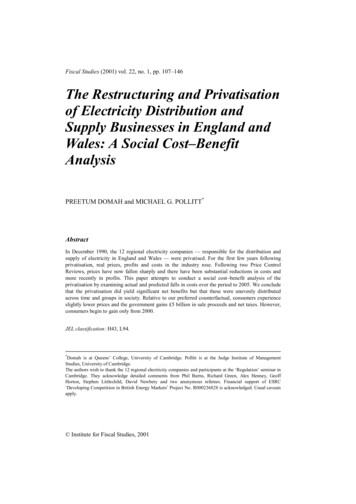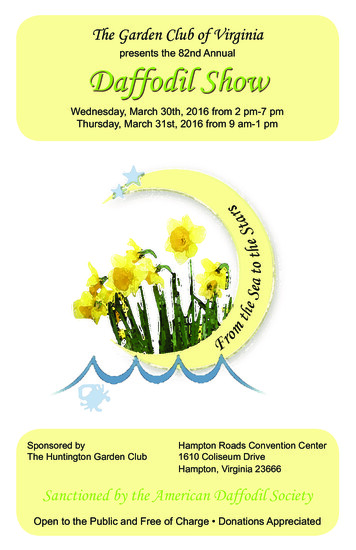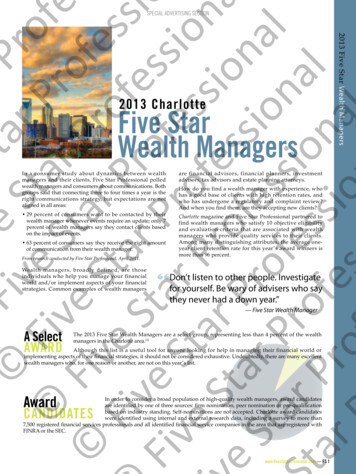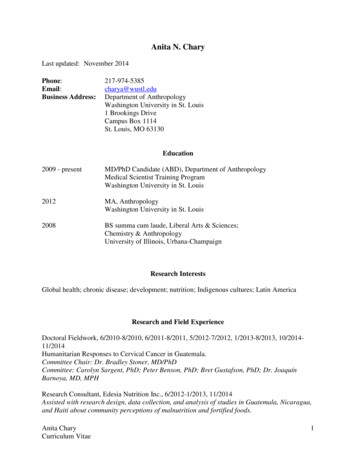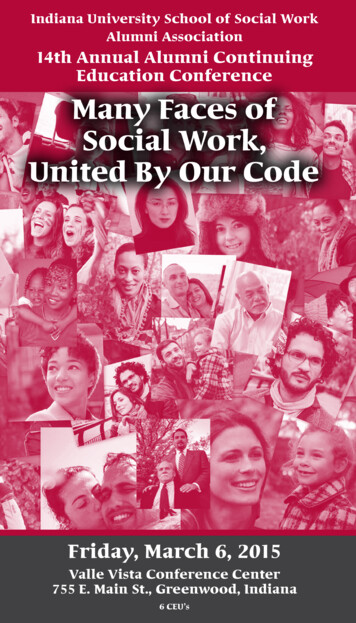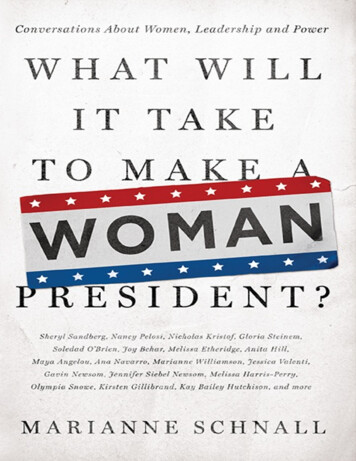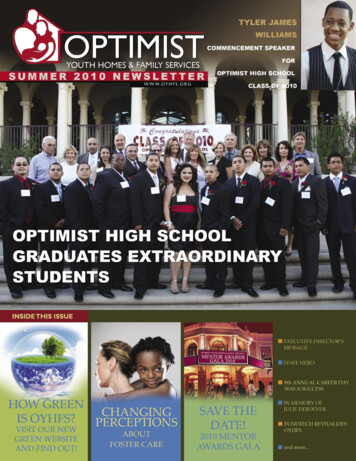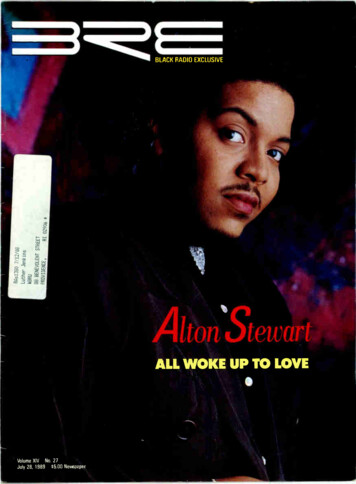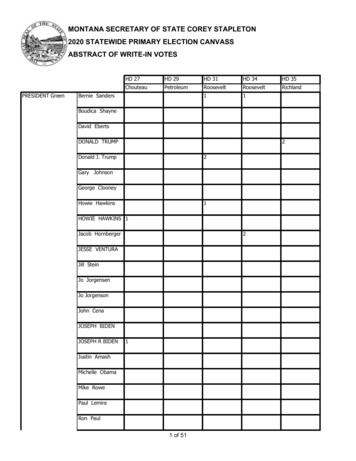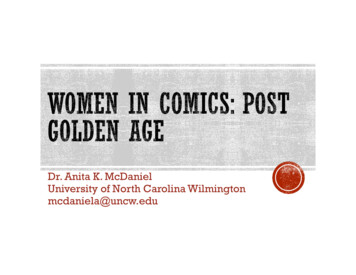
Transcription
Dr. Anita K. McDanielUniversity of North Carolina Wilmingtonmcdaniela@uncw.edu
“On the topic of gender issues in superhero fiction, itseems that, in the action-adventure fantasy world paritybetween the sexes is a good thing. Whereas this isfantasy serving the forces of commerce, the forces ofcommerce in return serve the forces of fantasy. Peoplewould not pay to read and see the tales of these fictionalheroes if the lessons–explicit and implicit–of the fictionsdid not feed their psyches and souls. Each generationmakes the fictional heroes it needs. What shouldinspire–or terrify–us are not the hero’s powers orgender, but what the heroes represent about our needs,our fears, and our attitudes.”Danny Fingeroth
Golden Age—male creators/writers/artists producingmale oriented subject matter for male readers. Post Golden Age—women as editors, writers andartists influencing well known titles of the Big Two andcreator driven, independent works Result—a new voice spoken by women is being heardin comic books and is helping to shape readers'perceptions of the superhero.
Thesis Often it has been stated that female superhero titles donot sell. Hence, superheroines (created by men)devolved into two dimensional stereotypes (WonderWoman), plot devices for the stories of malesuperheroes (Batgirl), and industry jokes (She-Hulk). Emphasis has been placed on the talented work ofKaren Berger (editor), Barbara Kesel Randall(writer), and Jan Duursema (artist) because theyexemplify attempts by women to restore dignity and“super” status to superheroines.
“The [superhero] genre stuff that I did had to have strongelements of realism. I don’t like having a story that istotal fantasy or that has no basis in reality.”“As an editor I tried to bring out the best in what [Perez’s]vision was. This was another time when I think beinga woman helped. There was a lot of me in there and Ihad a total emotional commitment to that book.”Karen Berger (editor)
BERGER-PEREZ WONDER WOMANRealism is a definingcharacteristic of Modern Agecomics. Golden Age heroesprotected fictional cities likeGotham and Metropolis fromspace invaders and superpowered villains. WonderWoman, however, establishedresidence in real locations likeBoston and London wheresitting mayors and heads ofstate made cameoappearances.
BERGER-PEREZ WONDER WOMANPrincess Diana defeatedAres, the god of war, in hiscampaign to rule the world.However, the contest did notend with a predictable physicalconfrontation. Diana did notbeat Ares because she “foughthim like a man;” she emergedvictorious because she “did itlike a woman.”
“If there’s anything I hate with a passion, it’s charactersbehaving out of character, especially when it involves asmart woman being stupid for no reason.”“My job was to make people give a hoot that poor l’ilBabs had her spine shot out.”Barbara Kesel Randall (writer)
THE KILLING JOKE BARBARA GORDON
THE KILLING JOKE BARBARA GORDONWomen/Girlfriends inRefrigerators SyndromeToo often women in comics aretortured, raped, maimed,killed, depowered, or made togo insane to further thedevelopment of a currentstoryline for a male characterand/or to establish a premisefor a future story. This style ofwriting not only devaluesfemale characters, it sexualizestheir existence and demise.
BATGIRL SPECIAL BARBARA GORDON
“Ithrow my creative energies totally into the lives ofthe characters and try to understand what motivatesthem–how they walk, gesture; when they smile; whatmakes them angry or sad. I try to give each charactertheir own visual personality and identity in the way theymove and react. When I’m done with a story, I want tofeel like I made these characters come alive for thereader.”Jan Durrsema (artist)
MARVEL SWIMSUIT ISSUE SHE-HULKCommodified femininityWhen media agents signifyfemininity by visuallyemphasizing the line and curveof the female body along with acode of poses, gestures, bodycants and gazes. So little ofShe-Hulk’s identity exists in thedrawing beyond the green hairand skin, she could beanybody and, thus, becomesrecognized as no one.
MARVEL SWIMSUIT ISSUE SHE-HULKDuursema is knownfor creating strong women–physically strong and strong incharacter. Readers arereminded constantly that thesewomen do something besideslook pretty. Notice how almosthalf of the space on the page isdevoted to the character’s legs.This visual technique creates abalance between She-Hulk’sfeminine qualities and hersuperhero qualities.
ConclusionThe post Golden Age superhero genre hasbenefited from the contributions of women duringcomic book production. According to Fingeroth’sopening quote, “Each generation makes the fictionalheroes it needs.” Hopefully, the feminine voice in thecomic industry helps readers of the superhero genreappreciate the need for an improved view of the femalesuperhero.
. Grand Comic Book Database [Online July 2006]. http://comics.org/index.lasso . Who’s Who in American Comic Books [Online July 2006]. /WhosWho.aspx .Duursema, Jan, Duursema, Jan and Smith, Tom. “She-Hulk.”MARVEL SWIMSUIT SPECIAL 1, 4 (1995).Lee, Stan, Kraft, David Anthony, Buscema, John and Vosburg,Mike. Savage She-Hulk #1-25. New York: Marvel Publishing, Inc., 2006.Perez, George, Wein, Len and Potter, Greg. Wonder Woman: Godsand Mortals. New York: DC Comics, 2004.Moore, Alan, Bolland, Brian, Higgins, John and Starkings, Richard.“Batman: The Killing Joke.” DC Universe: The Stories of Alan Moore.New York: DC Comics, 2006.Randall, Kesel, Kitson, Barry and Patterson, Bruce D. “The LastBatgirl Story.” BATGIRL SPECIAL 1, (1988).
THE KILLING JOKE BARBARA GORDON. THE KILLING JOKEBARBARA GORDON Women/Girlfriends in Refrigerators Syndrome Too often women in comics are tortured, raped, maimed, killed, depowered, or made to go insane to further the . Who’s Who in American

